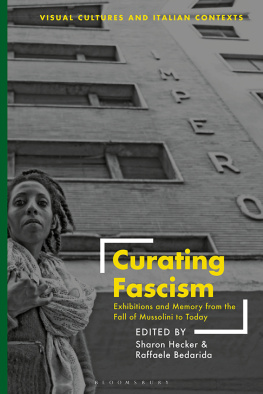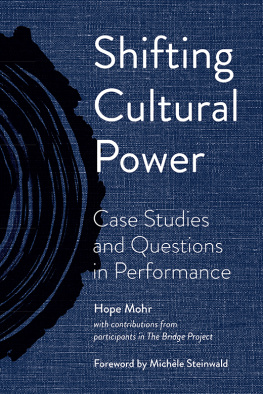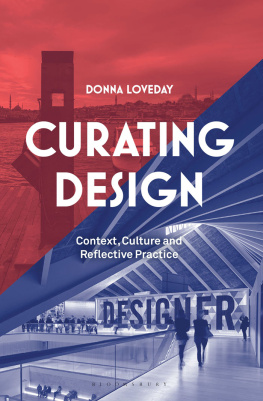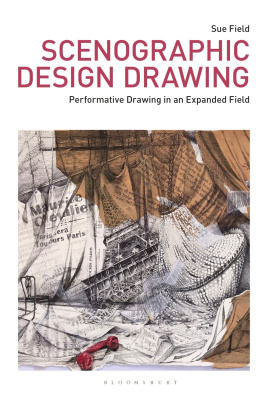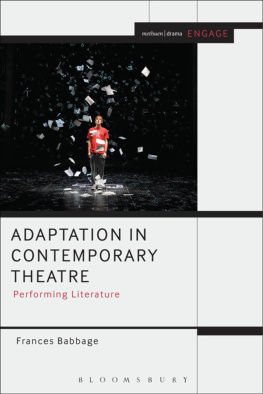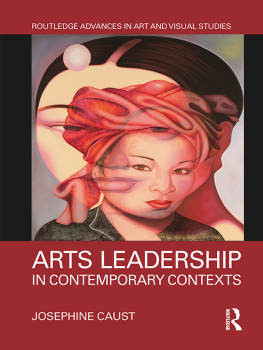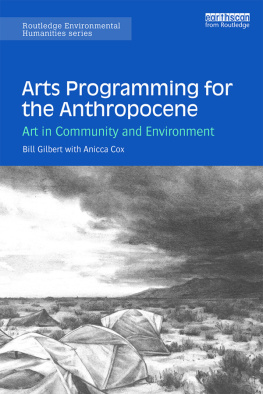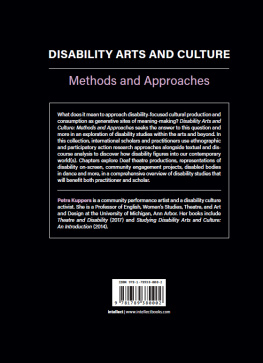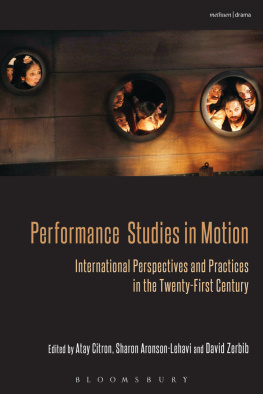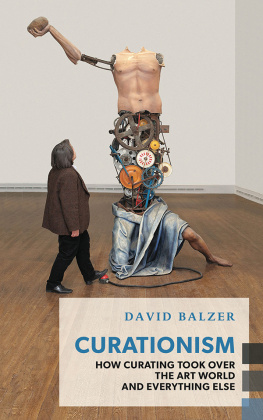Curating Live Arts

Curating Live Arts
Critical Perspectives, Essays, and Conversations on Theory and Practice
Edited by
DENA DAVIDA, JANE GABRIELS,
VRONIQUE HUDON, AND MARC PRONOVOST


First published in 2019 by
Berghahn Books
www.berghahnbooks.com
2019 Dena Davida, Jane Gabriels, Vronique Hudon, and Marc Pronovost
All rights reserved. Except for the quotation of short passages for the purposes of criticism and review, no part of this book may be reproduced in any form or by any means, electronic or mechanical, including photocopying, recording, or any information storage and retrieval system now known or to be invented, without written permission of the publisher.
Cover photos: Top, Mark Eastman performing in Investigation in Masculinity. Artistic Director: Cynthia Oliver. Clothed by The Cloth. Performance in partnership with Dancing While Black, the New Waves! Commission Project, presenting work by contemporary choreographers and performance artists of the Caribbean and its Diaspora. Co-curated by New Waves! Director Makeda Thomas, and Paloma McGregor, Director of Dancing While Black, this experimental, multi-performance, interdisciplinary environment featured dance and other performances at the NALIS Amphitheatre in Port of Spain, Trinidad and Tobago, on Thursday, 30 July 2015 at 7 p.m. Participating artists for the Dancing While Black Performance Lab included Cynthia Oliver, Thomas F. DeFrantz, Shireen Dickson, Anika Marcelle, Adanna Jones, Orlando Hunter, Nyama McCarthy-Brown, and The Black That I Am. (Photo by Sophie Bufton, 2015.) Bottom, Nadge Grebmeier Forget, As We, 2015. Courtesy of the artist. Quote collage and photographic response to A Third Space: Chasing the Intangible by Michle Steinwarld and Michael Trent. www.nadege-grebmeier-forget.com.
Library of Congress Cataloging-in-Publication Data
A C.I.P. cataloging record is available from the Library of Congress
British Library Cataloguing in Publication Data
A catalogue record for this book is available from the British Library
ISBN 978-1-78533-963-9 hardback
ISBN 978-1-78920-134-5 paperback
ISBN 978-1-78533-964-6 ebook
We dedicate this book to artists and curators everywhere
working for sustainable social change.

Figure 0.1. This photo of curator Adham Hafez (Artistic Director, HaRaKa Dance Development and Research and Adham Hafez Company) was taken as he and a group of volunteers rescued books while they were being shot at and a fire blazed through the Institut dEgypte on 17 December 2011. We are fortunate to have this photographic record documenting a moment of activism during this historical catastrophe.(Photo by Mariam Sami, 2011.)

Contents
Florian Malzacher
Dena Davida, Jane Gabriels, Vronique Hudon, and Marc Pronovost
Bertie Ferdman
Beatrice von Bismarck
Elisa Ricci
Funmi Adewole with Jareh Das
Ken Takiguchi
Peter Dickinson
Judy Hussie-Taylor
Thomas F. DeFrantz
Naomi M. Jackson
Michle Steinwald
Tea Tupaji and Petra Zanki
Deborah Pearson
Julie Bawin
Kasia Trz
Jane Gabriels
Syreeta McFadden
Jacob Wren
Makeda Thomas
Marie-Hlne Breault
SALTA
Body Slam Improv Collective: Gregory Selinger, Helen Simard, Roger White, Xavier Laporte, Victoria Mackenzie, and Claudia Chan Tak
Travis Chamberlain
Julia Kurz
Fabien Maltais-Bayda and Joseph Henry
Erin Joelle McCurdy
Vronique Hudon
Roselle Pineda
Pam Patterson
Adham Hafez
Mariane Bourcheix-Laporte
Morten Sndergaard
Philip Bither
Marta Keil
Silvia Bottiroli
Arnaldo Rodriguez Bagu
Rie Hovmann Rasmussen
Vronique Hudon with Boris Charmatz
Emelie Chhangur
Tom Sellar

Illustrations
.
PROLOGUE

Bethinking Ones Own Strengths
The Performative Potential of Curating
FLORIAN MALZACHER
Maybe it is symptomatic of the strange untimeliness of theater that it has introduced the concept of the curator to the field of live arts at what seems to be a rather badly chosen moment: for even though curation remains a buzzword in the visual arts where it has experienced an unprecedented boom over the last decades, it is also increasingly criticized. Does the curator aim to be a meta-artist, ultimately creating art without artists? Is the curator a neoliberal agent, fulfilling the market demands even before the market itself demands them, well wrapped in seemingly anti-capitalist discourse? And is it not anyway a diluted, empty term by now, when every shop window is subject to curating?
So it does not come as a surprise that now, as the concept of curating slowly makes its way into the world of the live arts, it is confronted with quite a bit of skepticism. After all, theater tends to consider itself one of the last places of resistance against the imposition of the very neoliberalism that the visual arts, with their especially close relationship to market economy, is so much part of. And is not the title of a curator already actually just a sales device, used in the desire to snatch some of the glamour of the shiny world of galleries and biennales, appropriated by theater and festival programmers, producers, and dramaturges for its sexier sound rather than as a token for a real commitment to changing ones own practice?
Resentment meets some good arguments in these debates, which are often conducted as a superficial substitute for other discussions. This has most prominently been seen in the recent heated exchanges around former Tate Modern director and visual arts curator Chris Dercon taking over the legendary Berlin theater Volksbhne after the exit of the ground-breaking Frank Castorf. The debates rage over theater versus visual arts, repertoire/ensemble theater versus international production house, drama versus post-drama, local versus global, ethos versus post-politics, sustainability versus event, social democracy versus market, and so on. The figure of the curator is a stand-in for many of these battlefields and became a symbol for the changes and challenges that confront mainly ensemble-based and text-based repertory theaters. But a deeper consideration of what curating in the live arts can actually contribute to artistic, aesthetic, political, discursive thinking is symptomatically not part of this debate.
STAGED EXHIBITIONS, CURATED PERFORMANCES
As much as the visual arts concepts of curating and the curatorial offer a potential that is still mostly unused or even undiscovered within the field of live arts, they are already more connected than one might think. It is not by chance that one of the pioneers of modern curating, the iconic Harald Szeemann, compared his work to that of a theater director, and art theorist Beatrice von Bismarck underlines the proximity of exhibition-making to the very job of a dramaturge.
Next page

